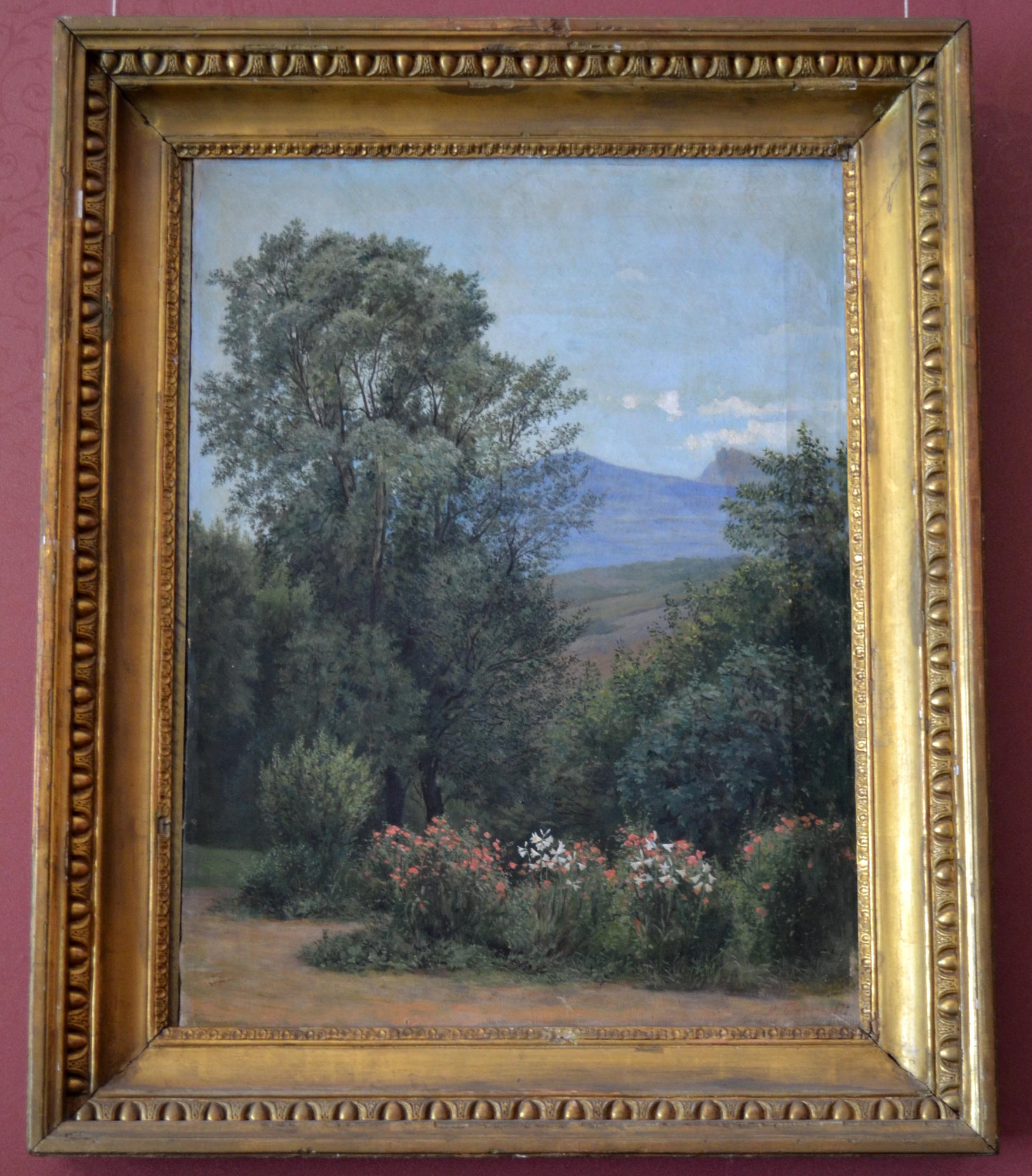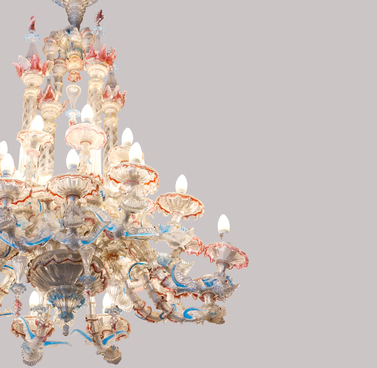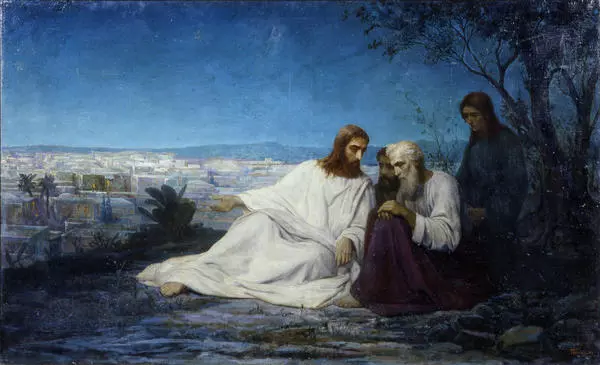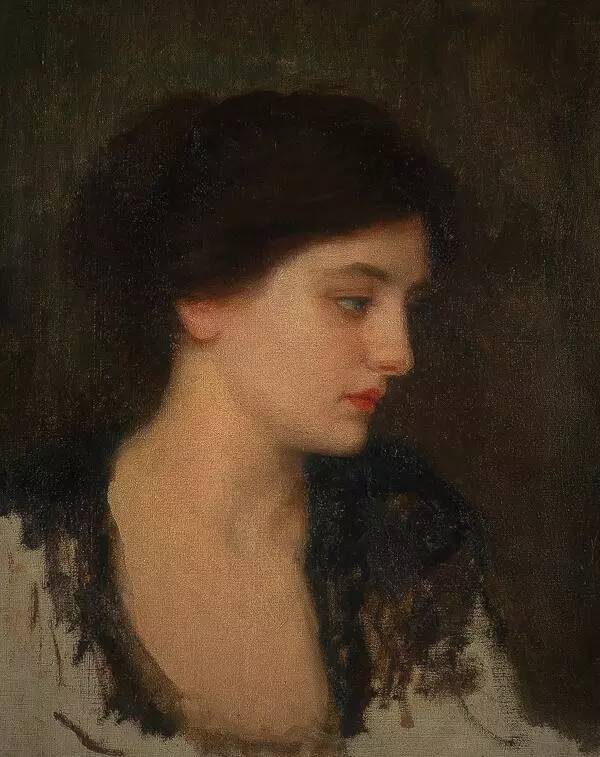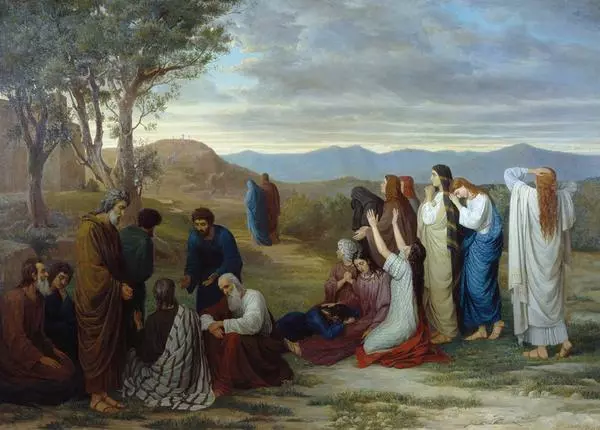The library of the Livadia Palace Museum is adorned with the painting called “Landscape”, created by the famous Russian artist Mikhail Botkin. The “Landscape” was painted in Massandra, which was part of the Romanov estate in the south.
Mikhail Botkin’s “Landscape” depicts the outskirts of Yalta with a view of the mountains Mogabi and Ai-Petri. The foreground shows two tall broadleaf trees surrounded by thickets of bushes and bright wildflowers. In the background is Mount Mogabi, with the peaks of Ai-Petri visible behind its slopes against the backdrop of the clear summer sky with light clouds. The bottom right corner features the artist’s inscription: “Botkin 1872.”
The Academician of history painting Mikhail Petrovich Botkin (1839–1914) was the brother of Vasily and Sergey Botkin. The artist was born in Moscow, where he was homeschooled before finishing grammar school. In 1856, Botkin entered the Academy of Arts, where he studied painting under Professor Zavyalov and the famous painter and teacher Fyodor Antonovich Bruni. After graduating from the Academy in 1858, Mikhail Botkin went abroad, and for several years he lived and worked in Germany, France and Italy. Upon his return, he exhibited two of his works at the Academy of Painting and following that became an Academician.
Among the artist’s pieces are history and genre paintings, as well as paintings inspired by the Bible. Moreover, Botkin could portray heads and figures in such a way that they conveyed a person’s character and temper, and he was a successful engraver. Botkin’s works are distinguished by their excellent composition. The artist is rightfully considered one of the best draftsmen of his day.
Apart from being a collector and an Academician of art history, Mikhail Botkin also compiled the exhibition catalog of the Russian Museum of Alexander III in Saint Petersburg. His brother Sergey Petrovich Botkin, a professor at the Imperial Academy of Medical Surgery and a clinician, was also closely connected with the Romanov family. He was one of the first to notice the positive effect that the unique climate of the Southern Coast of Crimea had on patients with tuberculosis. And so, Sergey Botkin’s recommendation to build a small mountain palace in the woods for Empress Maria Alexandrovna, who had been suffering from tuberculosis, was followed.
Mikhail Botkin’s “Landscape” depicts the outskirts of Yalta with a view of the mountains Mogabi and Ai-Petri. The foreground shows two tall broadleaf trees surrounded by thickets of bushes and bright wildflowers. In the background is Mount Mogabi, with the peaks of Ai-Petri visible behind its slopes against the backdrop of the clear summer sky with light clouds. The bottom right corner features the artist’s inscription: “Botkin 1872.”
The Academician of history painting Mikhail Petrovich Botkin (1839–1914) was the brother of Vasily and Sergey Botkin. The artist was born in Moscow, where he was homeschooled before finishing grammar school. In 1856, Botkin entered the Academy of Arts, where he studied painting under Professor Zavyalov and the famous painter and teacher Fyodor Antonovich Bruni. After graduating from the Academy in 1858, Mikhail Botkin went abroad, and for several years he lived and worked in Germany, France and Italy. Upon his return, he exhibited two of his works at the Academy of Painting and following that became an Academician.
Among the artist’s pieces are history and genre paintings, as well as paintings inspired by the Bible. Moreover, Botkin could portray heads and figures in such a way that they conveyed a person’s character and temper, and he was a successful engraver. Botkin’s works are distinguished by their excellent composition. The artist is rightfully considered one of the best draftsmen of his day.
Apart from being a collector and an Academician of art history, Mikhail Botkin also compiled the exhibition catalog of the Russian Museum of Alexander III in Saint Petersburg. His brother Sergey Petrovich Botkin, a professor at the Imperial Academy of Medical Surgery and a clinician, was also closely connected with the Romanov family. He was one of the first to notice the positive effect that the unique climate of the Southern Coast of Crimea had on patients with tuberculosis. And so, Sergey Botkin’s recommendation to build a small mountain palace in the woods for Empress Maria Alexandrovna, who had been suffering from tuberculosis, was followed.

